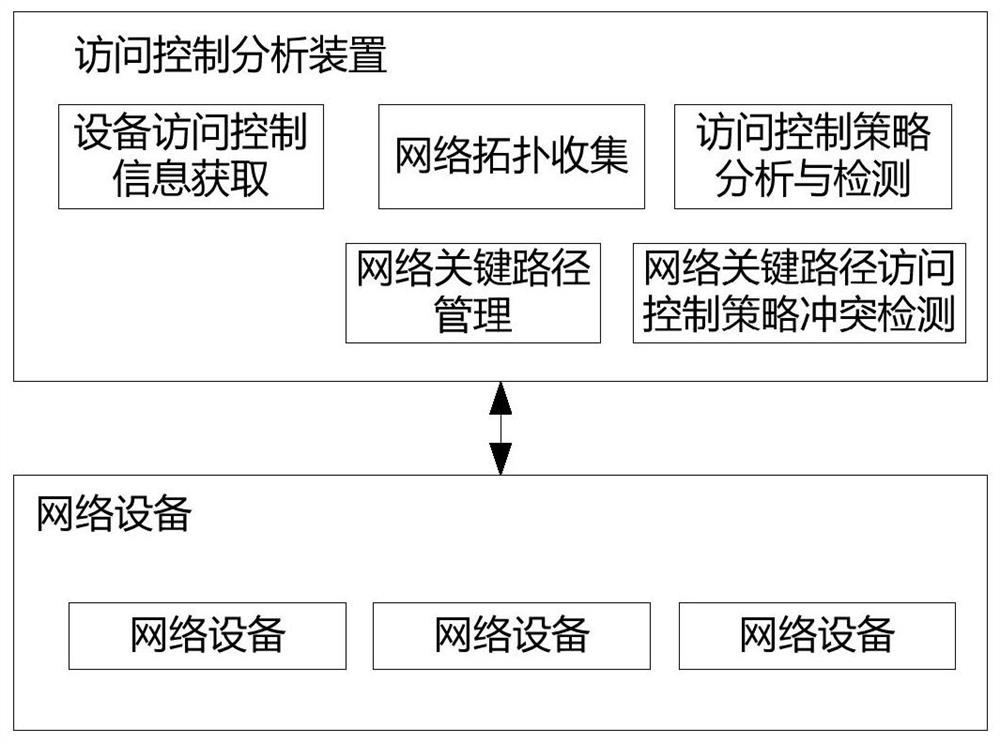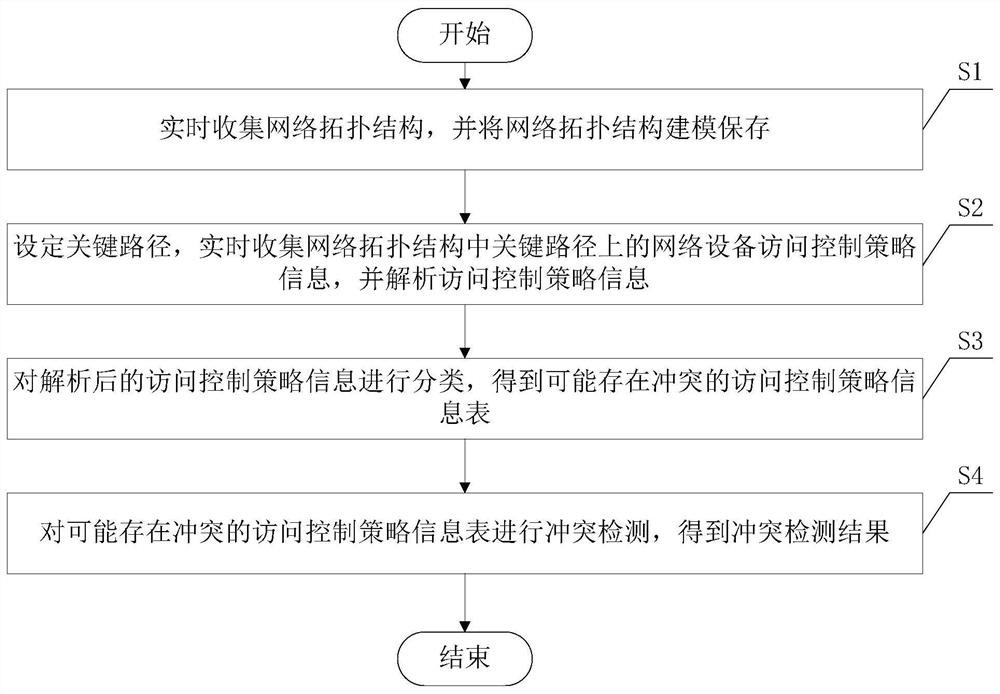Conflict detection system and method based on classified access control list
An access control list and conflict detection technology, which is applied in the field of network communication security, can solve problems such as failure of access control rules and affecting normal forwarding of messages, and achieve the effects of improving efficiency, reducing calculations, and ensuring network security
- Summary
- Abstract
- Description
- Claims
- Application Information
AI Technical Summary
Problems solved by technology
Method used
Image
Examples
Embodiment Construction
[0041] The specific embodiments of the present invention are described below so that those skilled in the art can understand the present invention, but it should be clear that the present invention is not limited to the scope of the specific embodiments. For those of ordinary skill in the art, as long as various changes Within the spirit and scope of the present invention defined and determined by the appended claims, these changes are obvious, and all inventions and creations using the concept of the present invention are included in the protection list.
[0042] Embodiments of the present invention will be described in detail below in conjunction with the accompanying drawings.
[0043] Such as figure 1 As shown, a classification-based access control list conflict detection system includes an access control analysis device and several network devices, and the access control analysis device is respectively connected to several network devices;
[0044] The access control ana...
PUM
 Login to View More
Login to View More Abstract
Description
Claims
Application Information
 Login to View More
Login to View More - R&D Engineer
- R&D Manager
- IP Professional
- Industry Leading Data Capabilities
- Powerful AI technology
- Patent DNA Extraction
Browse by: Latest US Patents, China's latest patents, Technical Efficacy Thesaurus, Application Domain, Technology Topic, Popular Technical Reports.
© 2024 PatSnap. All rights reserved.Legal|Privacy policy|Modern Slavery Act Transparency Statement|Sitemap|About US| Contact US: help@patsnap.com









